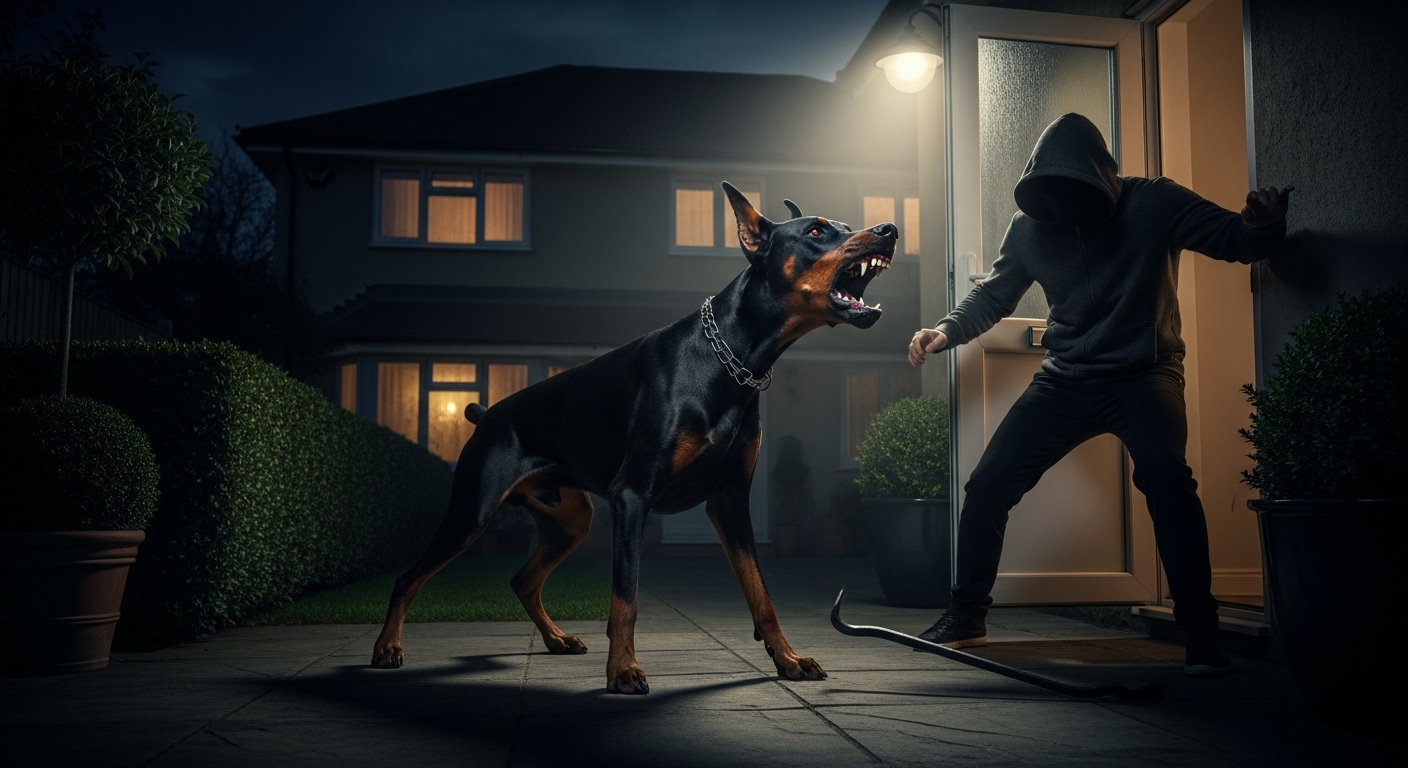Intruders don’t like surprises. In fact, one study found that neighborhoods with more dogs had nearly one-third fewer robberies and half the number of homicides compared to areas with fewer dog-owning households.
When you bring home a trained guard dog, you’re not just adding a pet — you’re installing a living alarm system that thinks, moves, and reacts on instinct.
These smart dogs aren’t fluff. They’ve been bred, selected, and trained to be bold sentries — watching, alerting, deterring.
If a burglar sees the wrong kind of dog on patrol, that home becomes a hard target. With the right breed, you turn hesitation into retreat.
This article dives into the toughest, most capable breeds built for guarding your territory — so you’re always one step ahead of the threat.
Toughest Dog Breeds Effective Against Intruders
1. Belgian Malinois
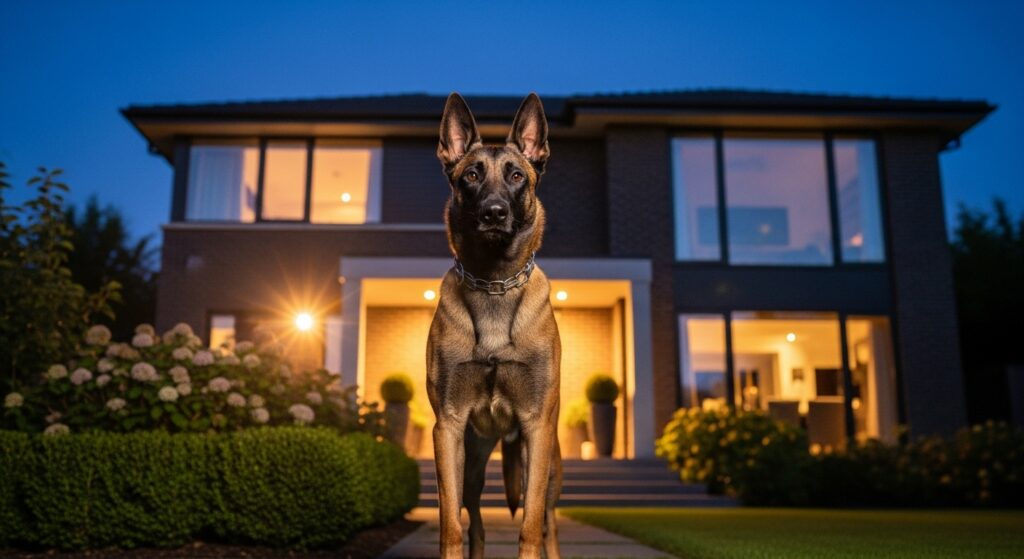
Sharp as a blade and fearless under pressure, the Belgian Malinois is a guardian born to lead. Known for its unwavering loyalty and laser-focused alertness, this breed doesn’t flinch when danger lurks.
It bonds deeply with its handler, making it a devoted protector and a loyal family companion when properly socialized and exercised.
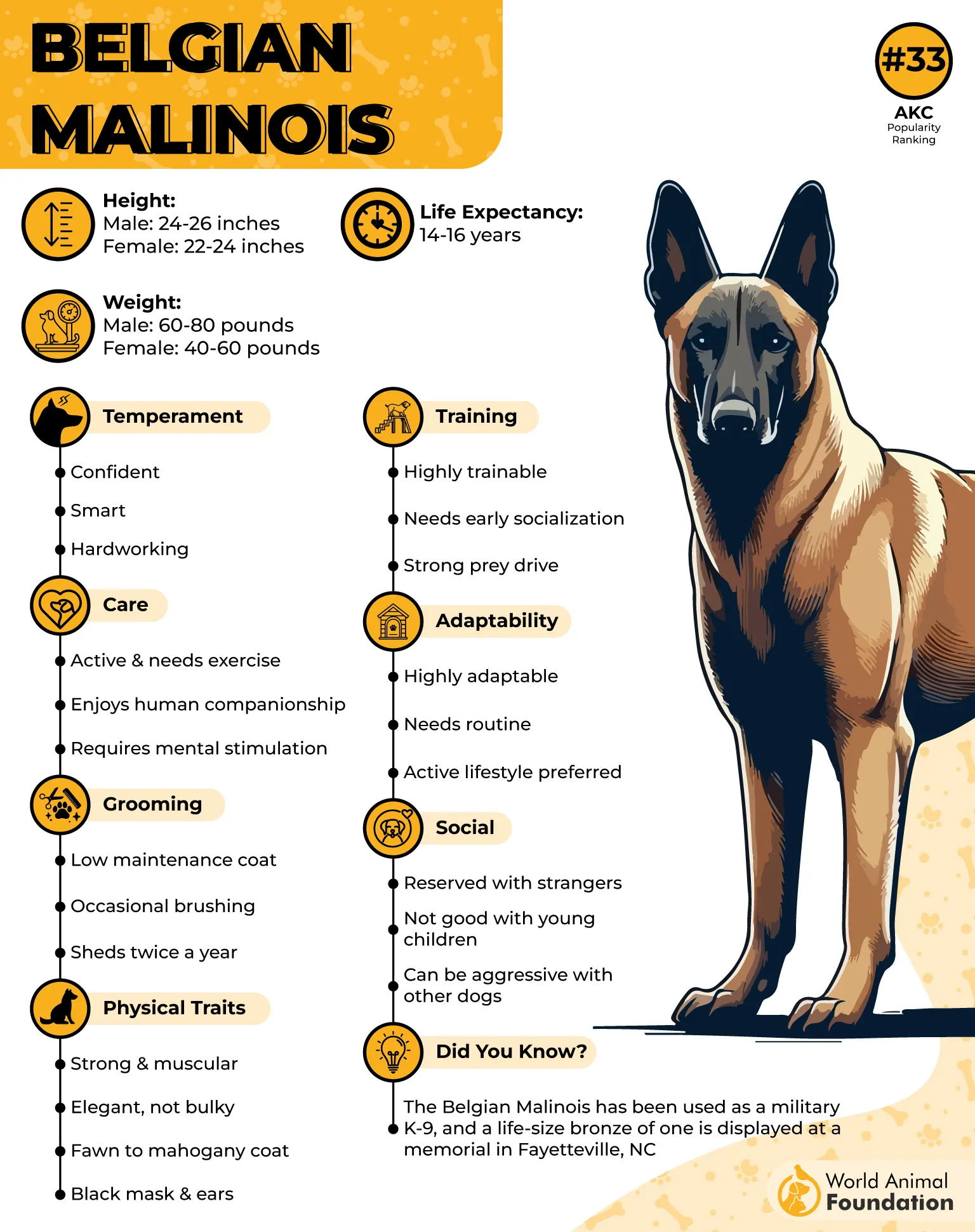
PetMD claims that with a muscular frame, agile stride, and piercing stare, the Malinois commands respect on sight. Originating in Belgium, it was bred for herding but quickly became the go-to breed for police and military K9 units worldwide — proof of its unmatched intelligence and courage.
Best Training Approach: Reward-based obedience with daily mental drills.
Work Ethic: Tireless, disciplined, and thrives on challenges.
Guarding Style: Alert, proactive, and territorial.
Instincts in Action: Reads movement fast, reacts faster.
Effectiveness: Ideal for home security, law enforcement, or active owners.
High-energy and sharp-minded, the Belgian Malinois demands purpose. Give it space, structure, and respect — and you’ll gain the ultimate protector that never clocks out.
🎧 Dogcast
Episode 12 — If Dogs Could Talk: Why Do Humans Go to the Gym When the Park Exists
If you don’t hear sound, tap the button above to enable audio.
2. Doberman Pinscher
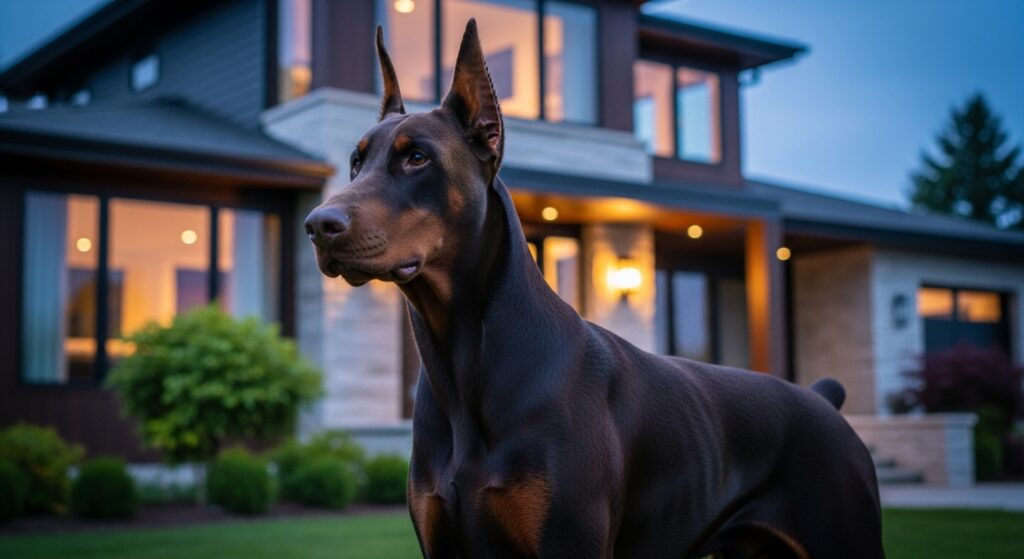
Built like a bullet and thinking just as fast, the Doberman Pinscher is the definition of controlled power. Sharp, fearless, and loyal to the core, it thrives under structure and commands respect with its piercing alertness.
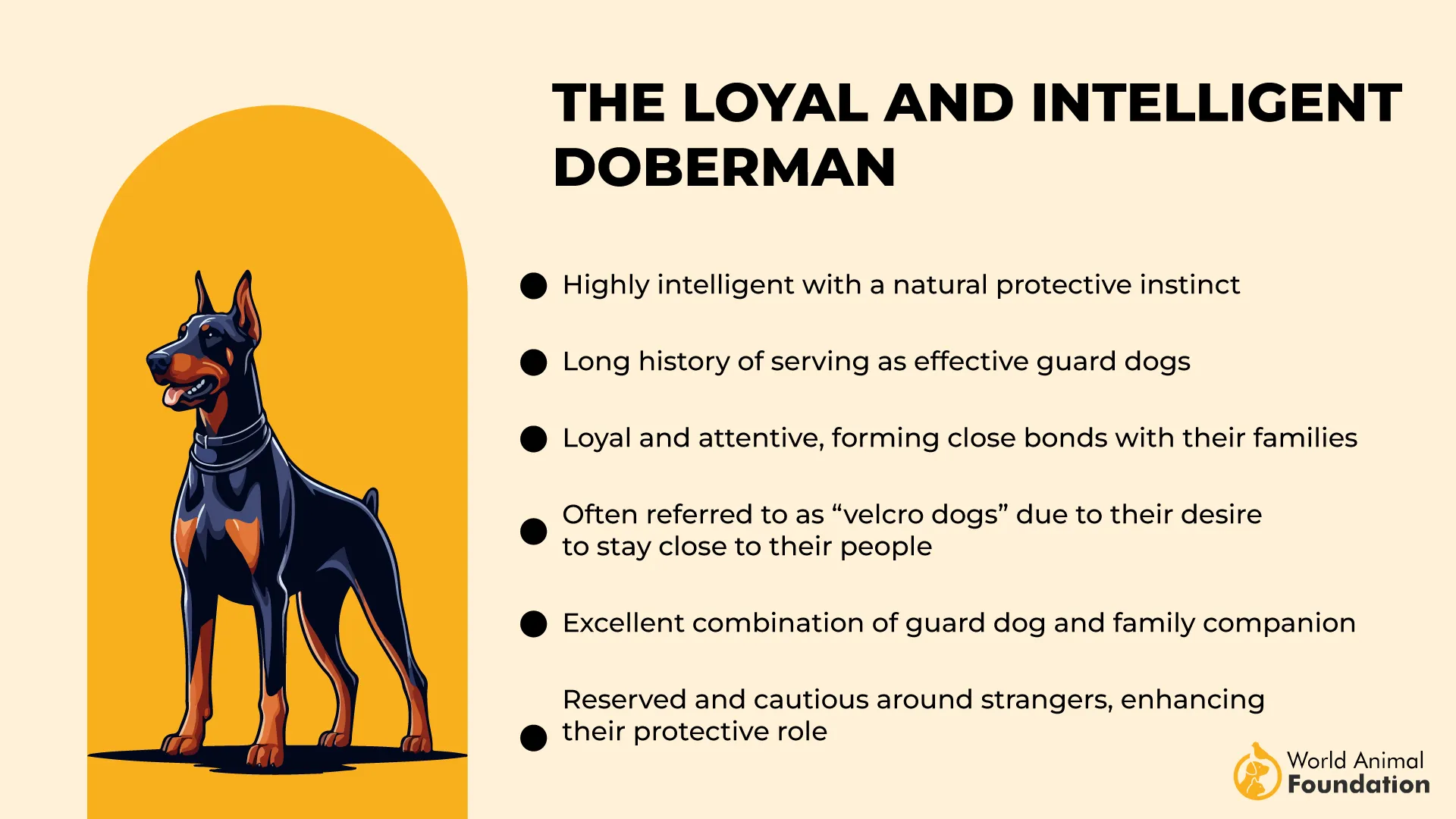
Under pressure, a Doberman doesn’t hesitate — it evaluates, responds, and protects with precision, making it a trusted family defender.
Sleek muscles, cropped ears, and an athletic stance give the Doberman a commanding presence. Developed in Germany by tax collector Louis Dobermann, it was designed to guard with both intelligence and aggression — a balance only this breed perfects.
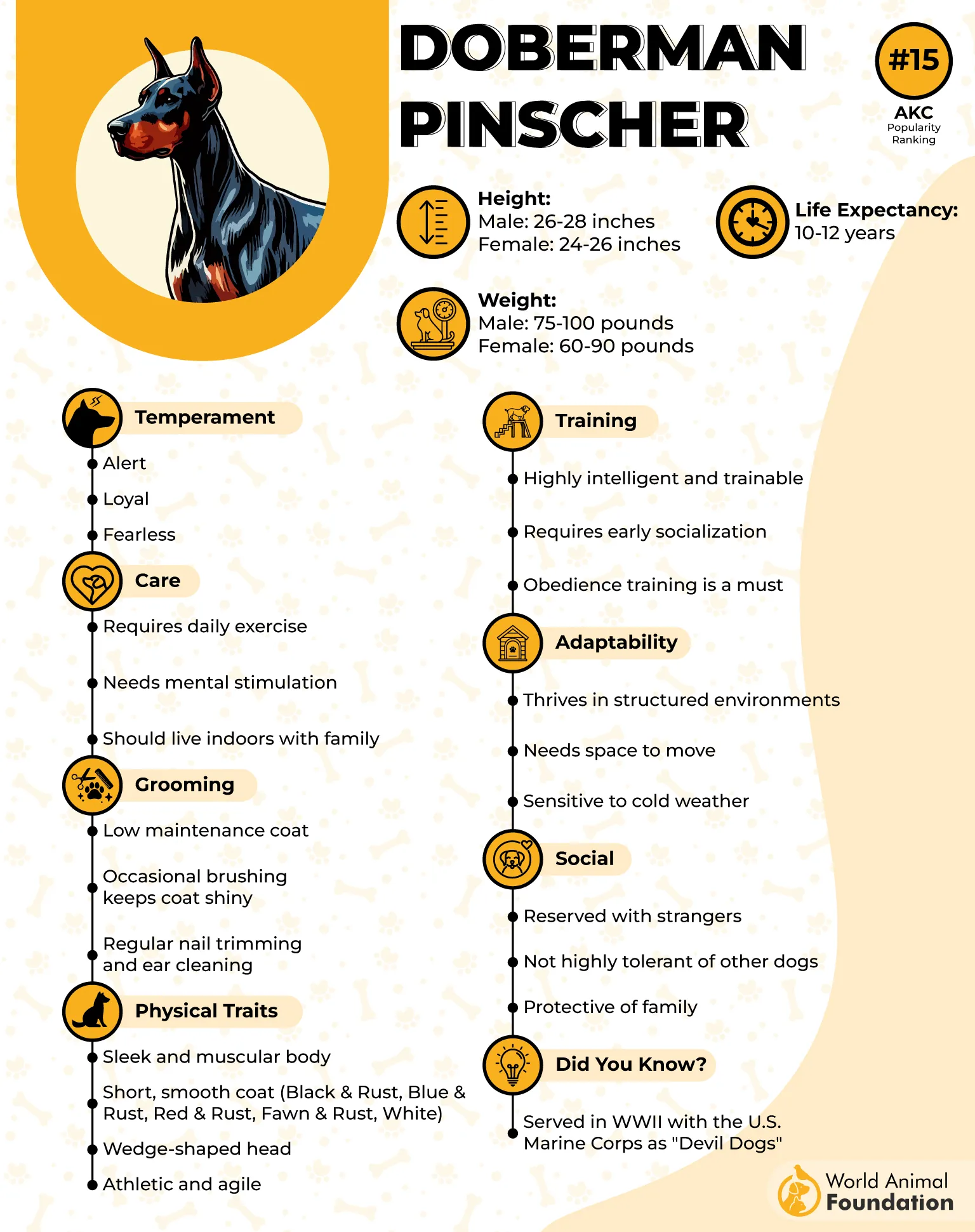
Best Training Approach: Confidence-building obedience with firm leadership.
Work Ethic: Determined, responsive, and eager to please.
Guarding Style: Strategic and intimidating.
Instincts in Action: Senses intent before movement.
Effectiveness: Excels in home defense, protection sports, and security patrols.
AKC notes that high energy and strong loyalty define this breed. Give a Doberman purpose, and it’ll give you vigilance in return — a living shield with a heartbeat.
3. Bullmastiff
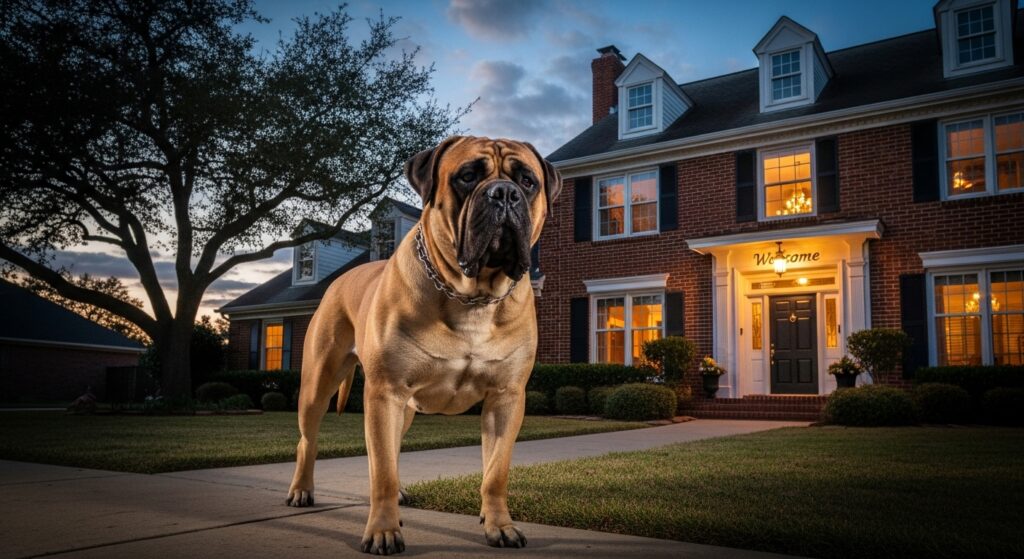
Calm until provoked, the Bullmastiff is a fortress on four legs. This dog doesn’t waste motion or energy — it calculates.
Known for courage and composure under pressure, the Bullmastiff guards quietly but reacts instantly when danger crosses its threshold. With family, it’s affectionate; with intruders, unstoppable.
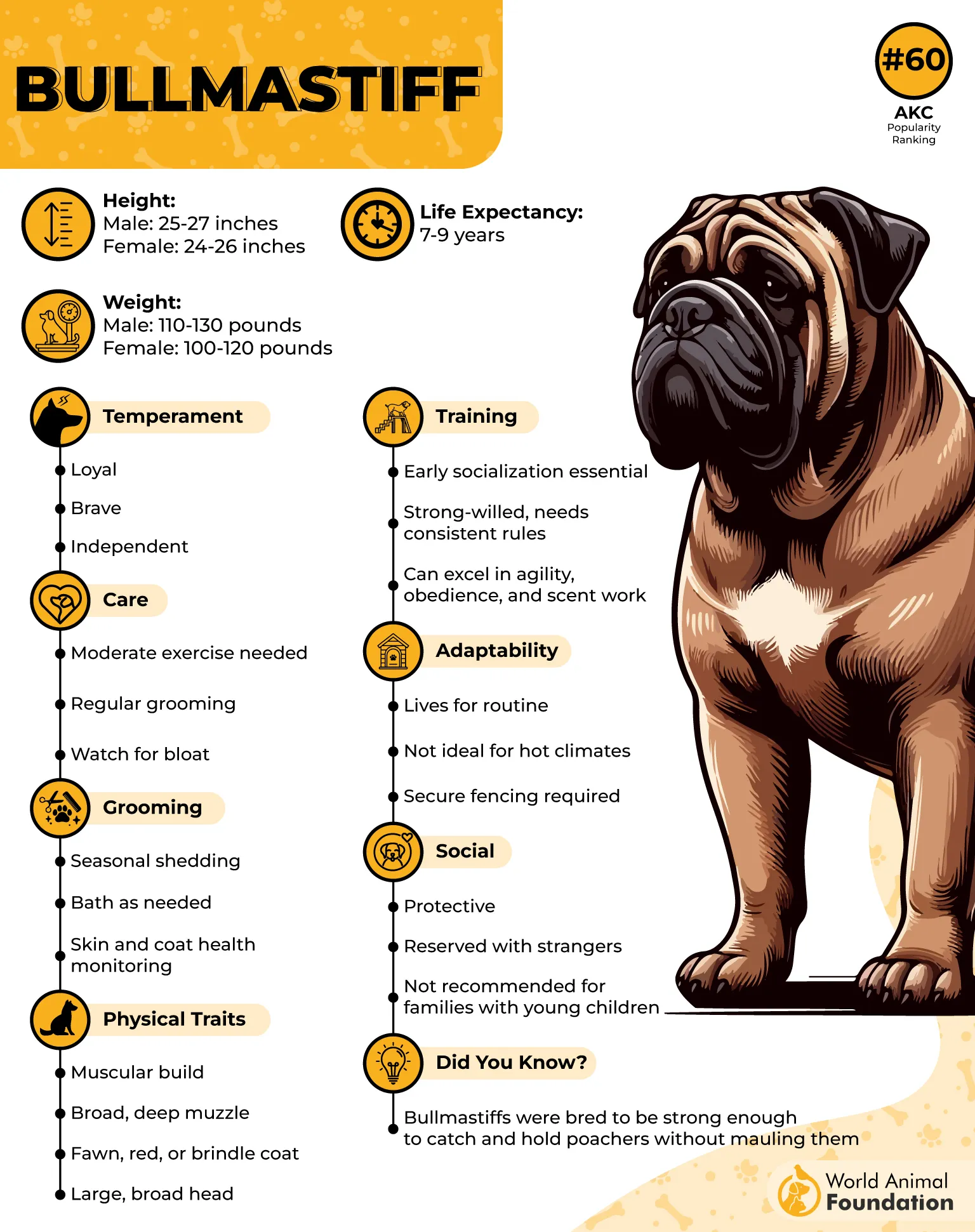
A blend of Bulldog determination and Mastiff strength, the Bullmastiff was bred in 19th-century England to protect estates from poachers. Its solid frame and confident stance make it both a visual deterrent and a physical powerhouse.
Best Training Approach: Consistent, reward-based discipline with gentle firmness.
Work Ethic: Reliable, steady, and intuitive.
Guarding Style: Silent observer, explosive when needed.
Instincts in Action: Pins threats without overreacting.
Effectiveness: Perfect for large homes, estates, and nighttime security.
This breed requires respect, routine, and clear boundaries. Give it love and leadership — and you’ll own a guardian that sleeps light and stands tall.
4. Giant Schnauzer
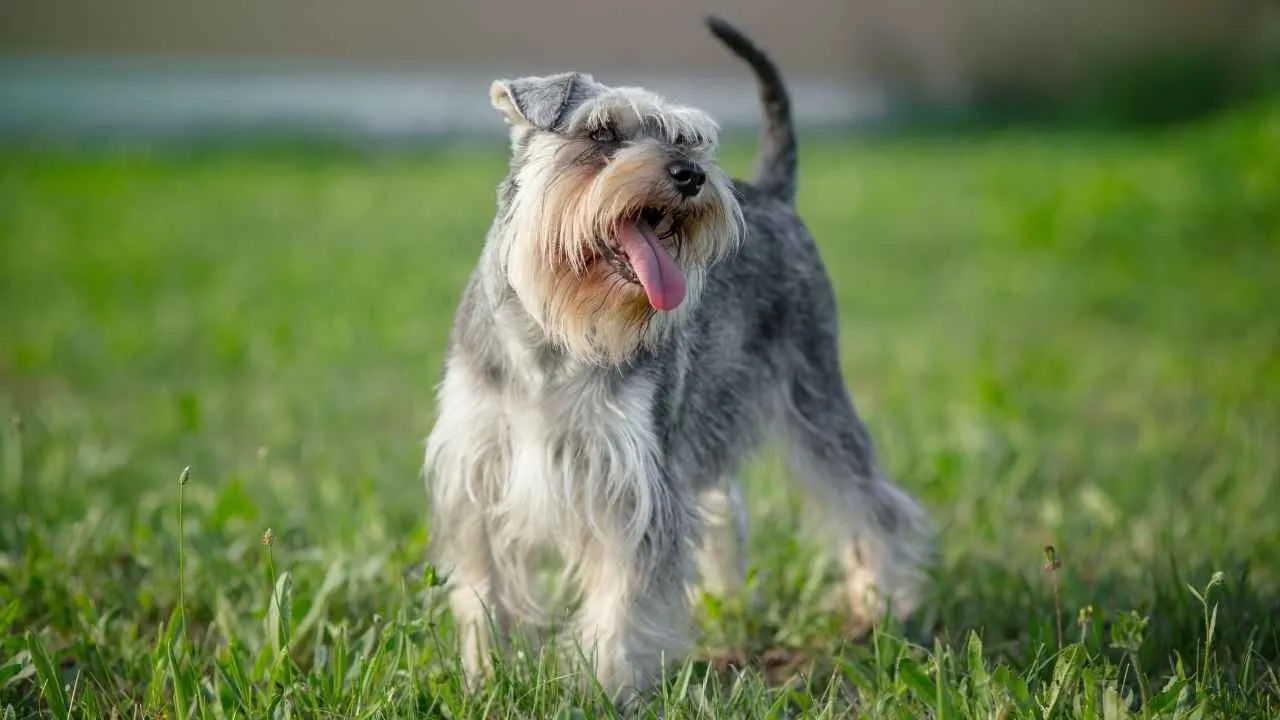
Smart, sturdy, and fearless, the Giant Schnauzer is a working dog with a mind of its own and muscles to match.
It’s intensely loyal and suspicious of strangers, reacting with a sharp bark or decisive stance when its family is threatened. Yet, under guidance, it’s a dependable and affectionate protector.
Standing tall with a dense, wiry coat and strong jawline, this breed was born in the Bavarian Alps to drive cattle and guard breweries. Over time, its intelligence and strength made it a police and military favorite.
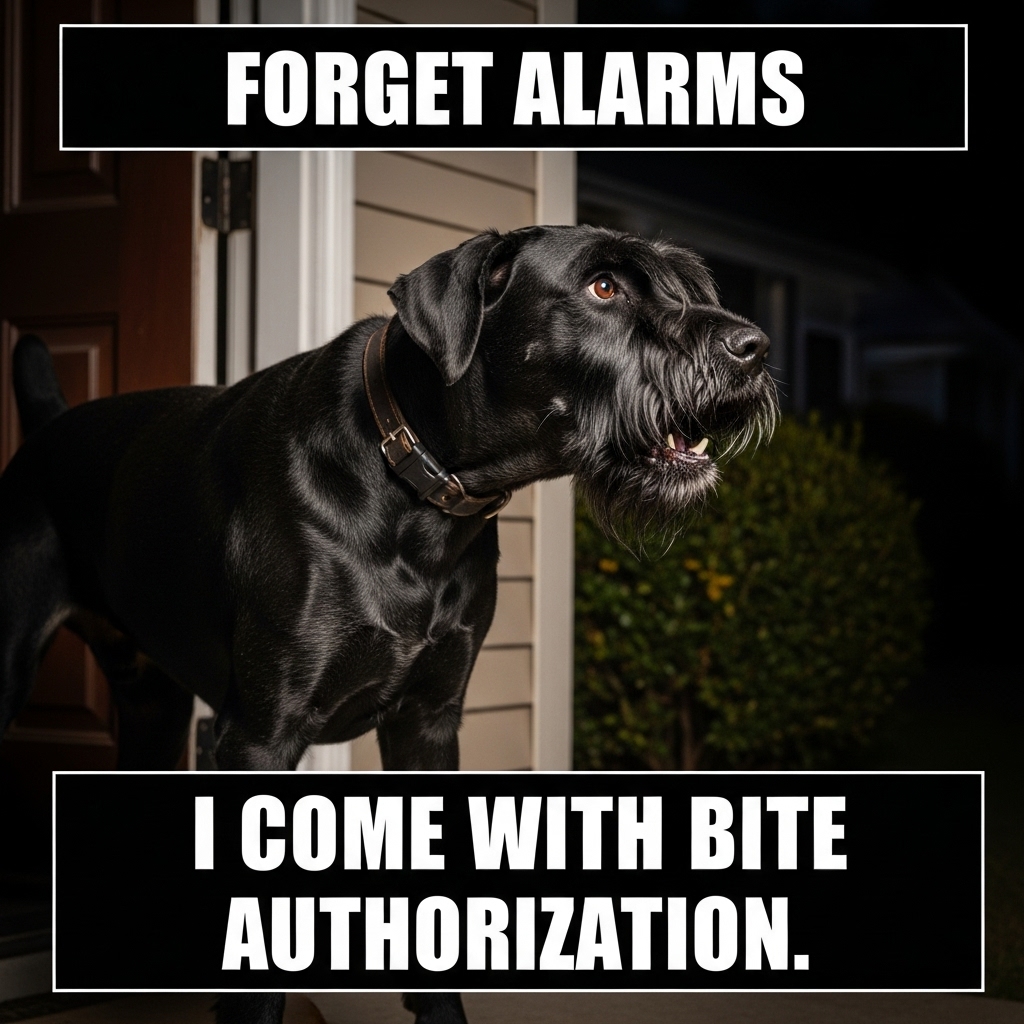
Best Training Approach: Structured obedience and consistent leadership.
Work Ethic: Focused, tireless, and determined.
Guarding Style: Watchful, reactive, and assertive.
Instincts in Action: Reads human tone, reacts swiftly.
Effectiveness: Excellent for trained protection and perimeter defense.
WebMD suggests that the Giant Schnauzer needs both mental and physical work daily. It’s a powerhouse best suited for experienced owners ready for a challenge — and a loyal ally.
5. Tibetan Mastiff
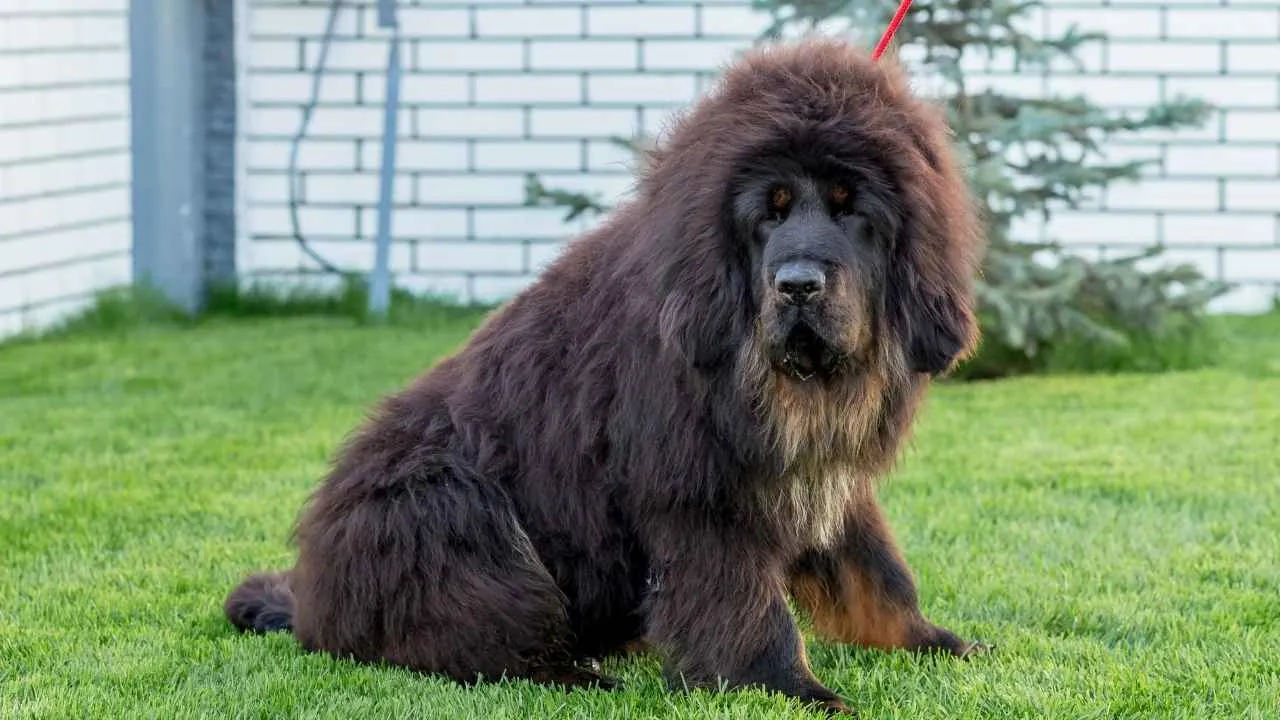
Majestic and unyielding, the Tibetan Mastiff is nature’s original sentinel. Aloof yet aware, it guards with quiet dominance rather than noise. Beneath its regal calm lies a storm of power and instinct, ready to protect its family and territory with ancient precision.
Originating from the high Himalayas, this breed was bred to guard monasteries and livestock from predators. Its heavy coat, massive frame, and deep bark make it an unmistakable guardian and an imposing figure.
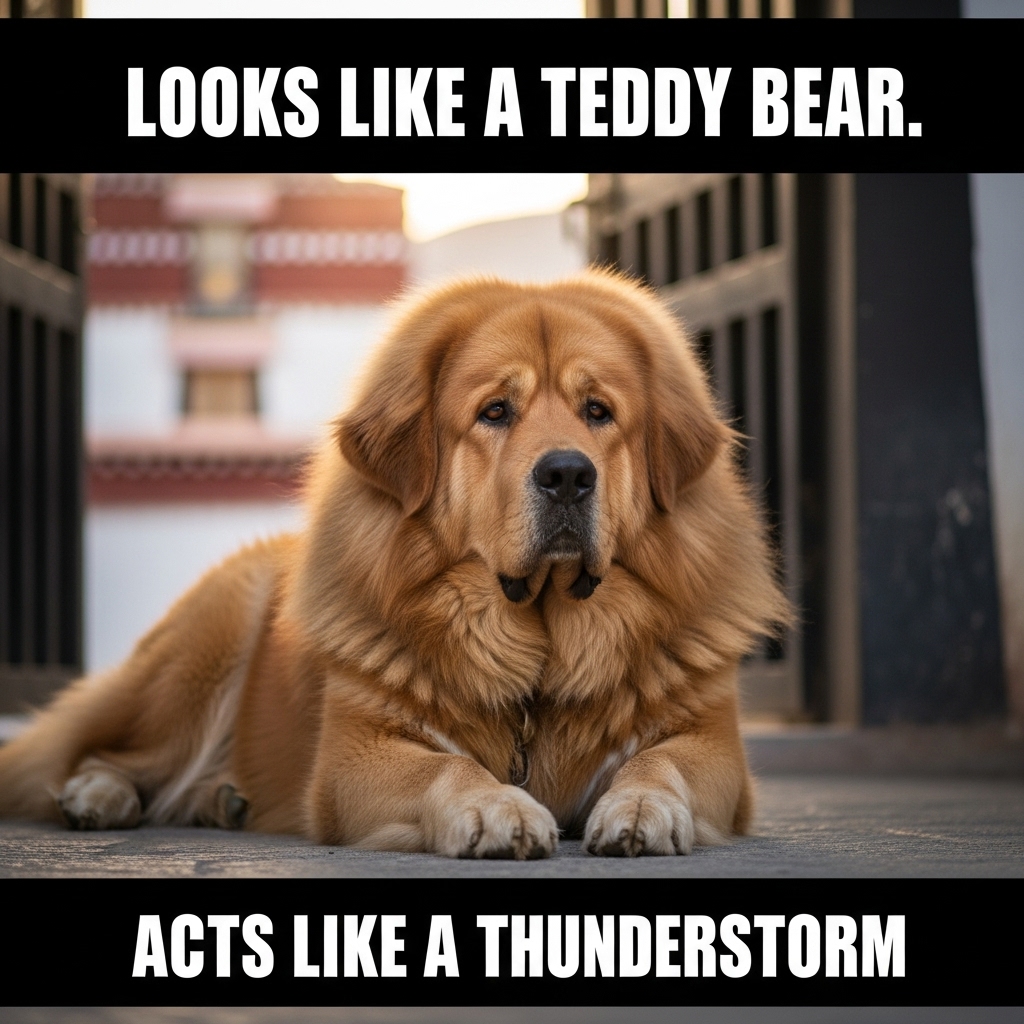
Best Training Approach: Early socialization and firm consistency.
Work Ethic: Independent, loyal, and strong-willed.
Guarding Style: Territorial and dignified.
Instincts in Action: Watches, warns, then acts decisively.
Effectiveness: Ideal for rural homes, ranches, and large properties.
The Tibetan Mastiff thrives in open spaces and cool climates. It’s best for confident owners who appreciate its independence — and understand that respect, not dominance, earns its loyalty.
6. Rhodesian Ridgeback
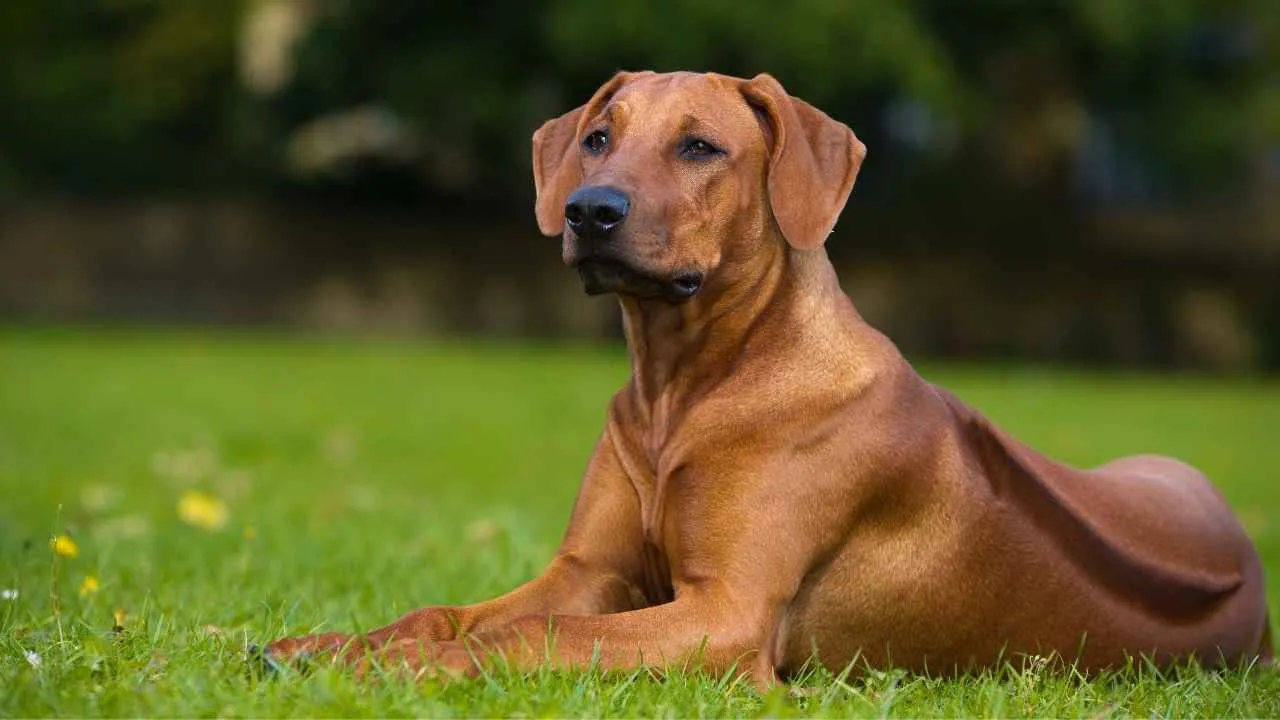
Courage runs in the Ridgeback’s blood. Originally bred to track lions, this breed doesn’t back down when things get tense. Loyal and self-assured, it’s affectionate at home but fearless when guarding those it loves.
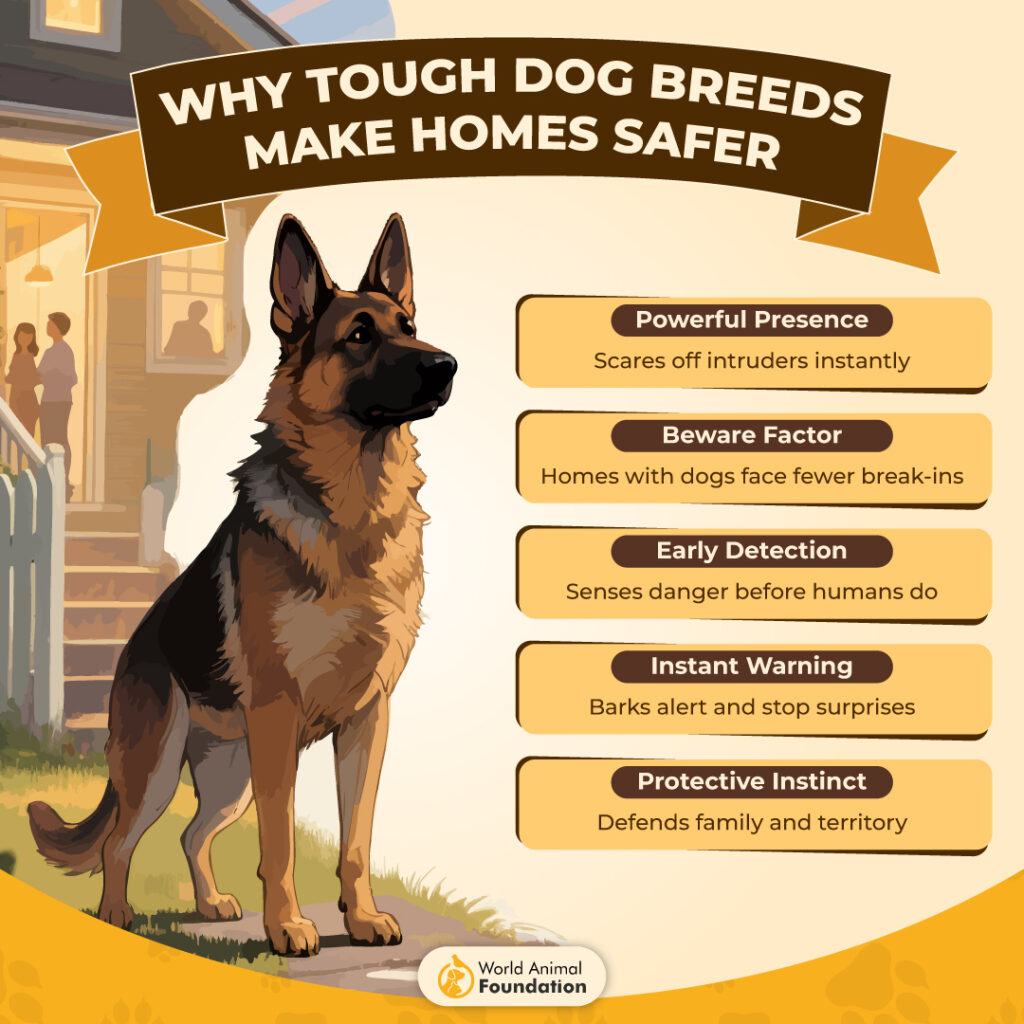
Lean, athletic, and instantly recognizable by the ridge of hair along its spine, this South African native is a mix of endurance and elegance. It was designed for long hunts and natural protection — a balance between speed and restraint.
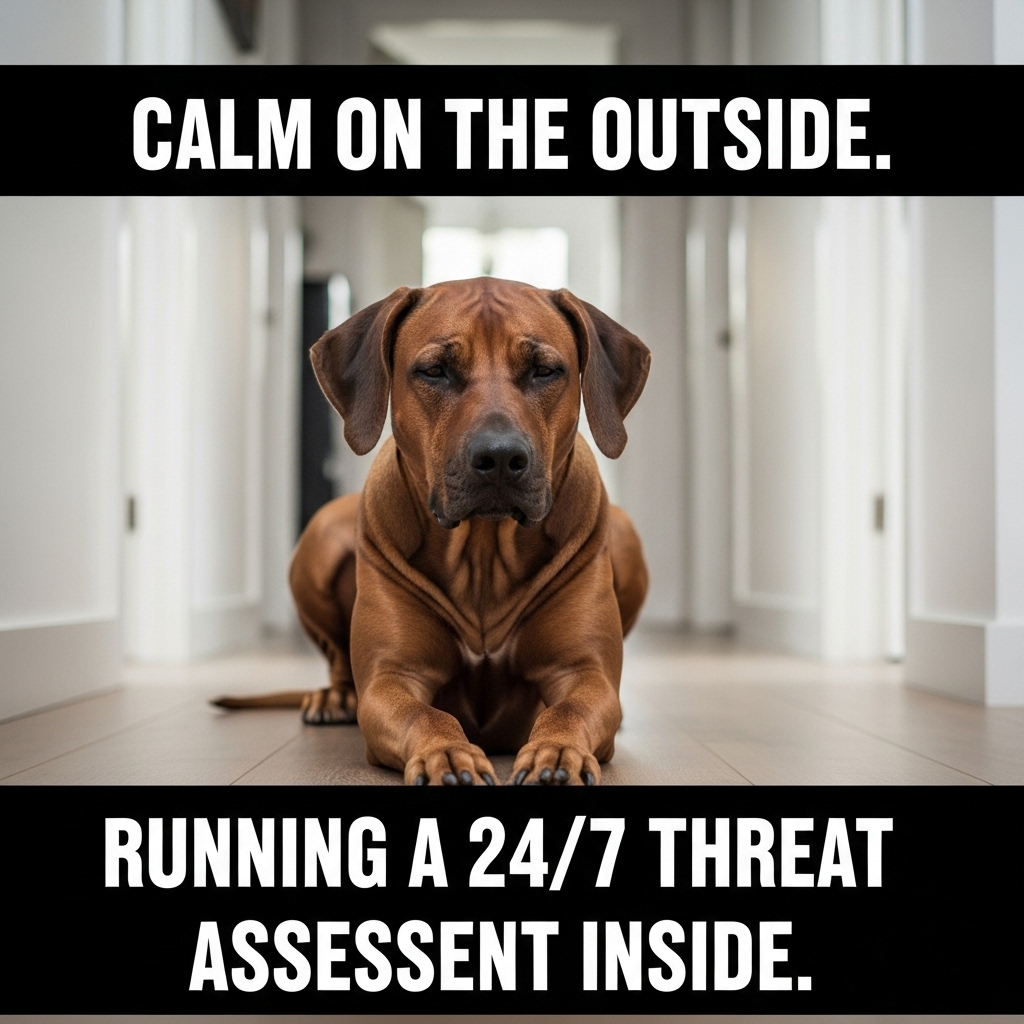
Best Training Approach: Firm, confident handling with positive reinforcement.
Work Ethic: Persistent and adaptable.
Guarding Style: Calm yet ready for confrontation.
Instincts in Action: Reads tension, intervenes with precision.
Effectiveness: Great for homes needing agility and strength in one package.
The Ridgeback is low-maintenance but demands respect and exercise. Give it room to run and a family to protect — and it’ll defend both without hesitation.
7. Great Dane
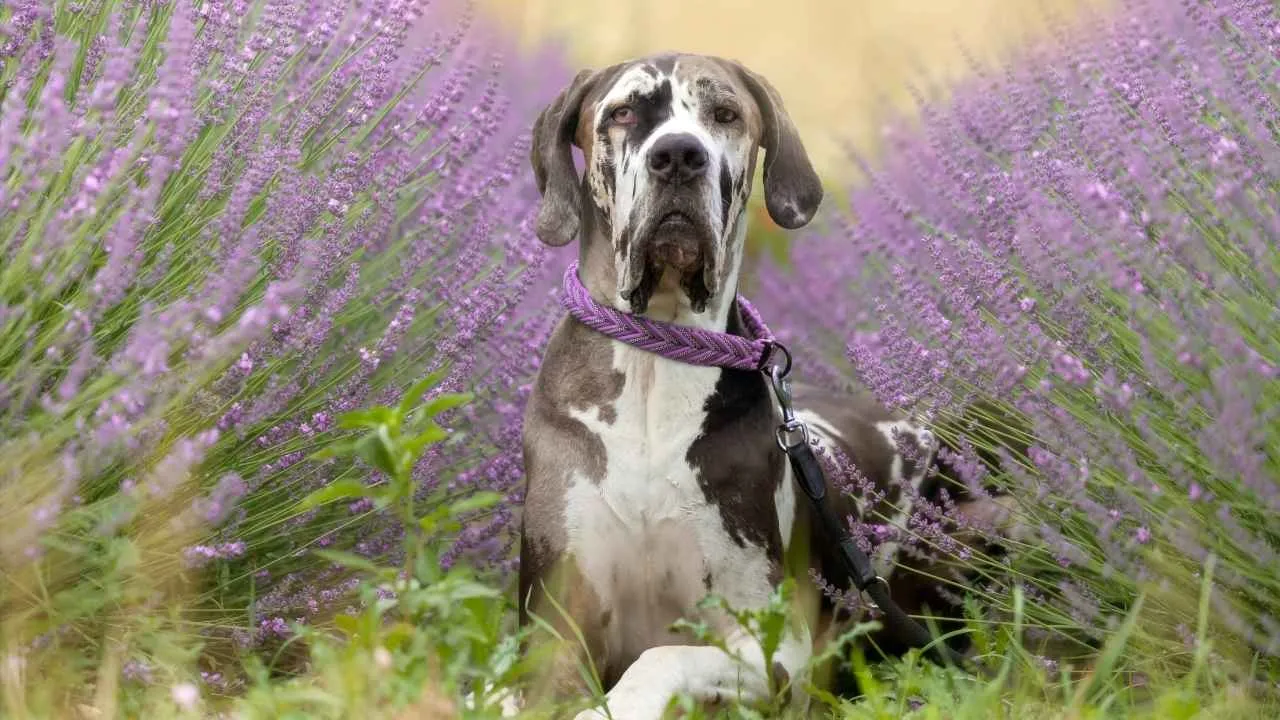
Graceful yet intimidating, the Great Dane earns its title as the “gentle giant” of guard dogs. Calm, confident, and quietly protective, it doesn’t need aggression to command authority. A single deep bark is often enough to send intruders running.
Towering in size and noble in appearance, this breed originated in Germany as a boar hunter and estate guardian. Today, its size and composure make it an unmatched deterrent — a guardian who rarely needs to prove itself.
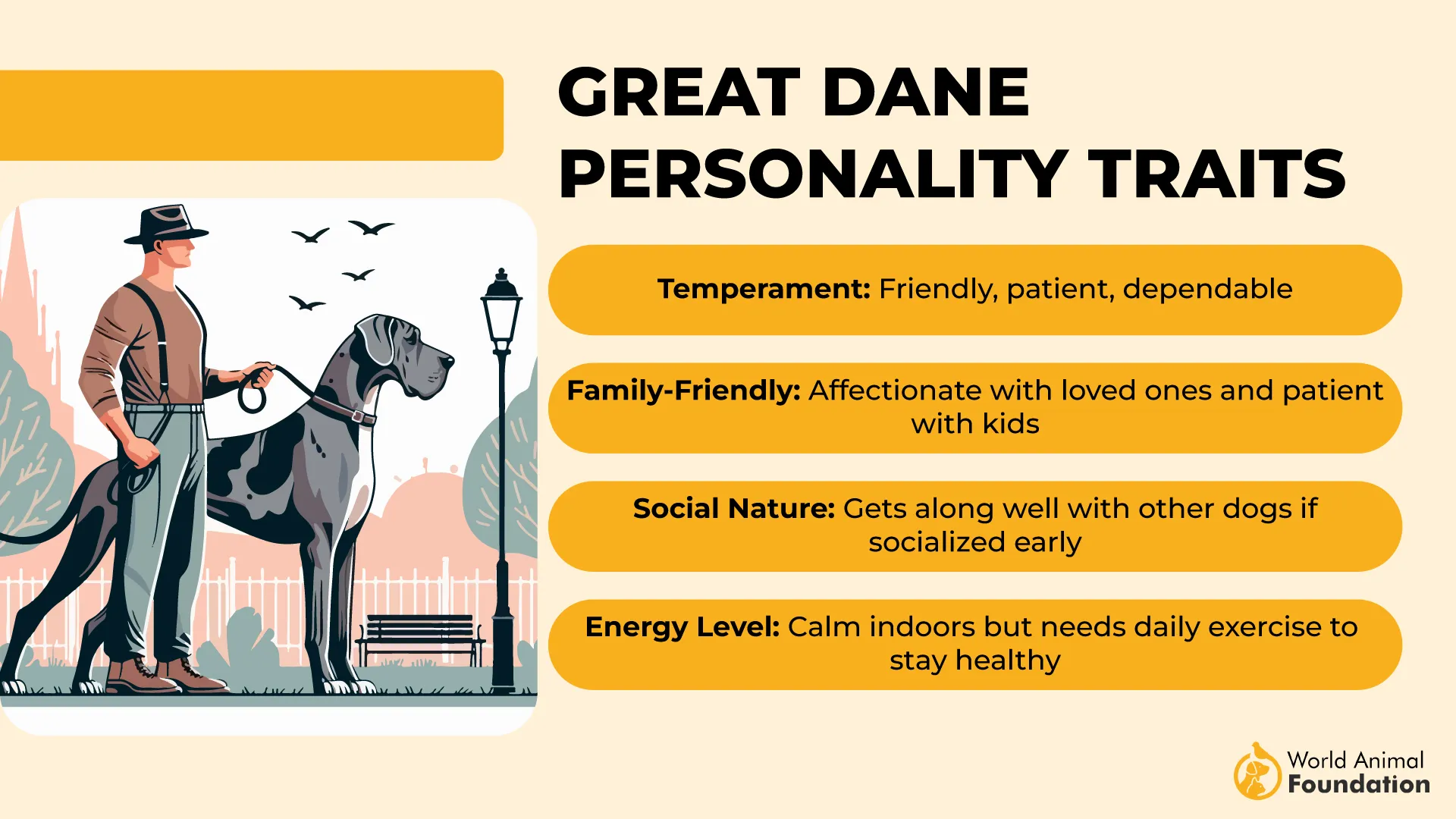
Best Training Approach: Gentle guidance with early socialization.
Work Ethic: Loyal, consistent, and patient.
Guarding Style: Deterrent through presence and warning.
Instincts in Action: Responds calmly but powerfully.
Effectiveness: Ideal for family homes seeking protection with composure.
Despite its imposing frame, the Great Dane thrives on companionship. It’s a watchdog that pairs kindness with strength — and loyalty that fills a room as easily as it guards it.
FAQs
How can I choose the toughest dog breed for home protection?
Start by matching the guard dog breed to your lifestyle, home size, and experience level. Breeds like the Belgian Malinois or Doberman thrive with active owners who can provide proper training and structure, while larger breeds like the Bullmastiff or Tibetan Mastiff suit spacious homes and calm leadership. Always consider your family members, including children, before committing—tough dogs need firm yet respectful guidance.
Can tough guard dogs differentiate between friends and intruders?
Yes—but only with proper obedience training and early socialization. Intelligent protection dogs such as Dobermans and German Shepherds develop sharp instincts that help them read human behavior accurately. They can recognize safe guests while staying alert to unfamiliar or suspicious actions, making their protective instinct both powerful and controlled.
How can I train my dog to guard without being overly aggressive?
The key lies in balance: consistent, reward-based training and positive reinforcement. Channel your dog’s instincts toward alertness and discipline rather than fear or dominance. Regular mental stimulation, exercise, and exposure to diverse environments will ensure your guardian stays obedient, confident, and safe around kids while still ready to protect when the moment demands it.
Conclusion
Across the world, guard dog breeds stand as living symbols of courage and loyalty. From those that hunt lions to breeds that guard livestock, their protective instinct and natural instincts remain unmatched. Even German Shepherds, Rottweilers, and the mighty Cane Corso—though not detailed here—share those same qualities that make them popular guard dog breeds trusted by families and forces alike.
A true protection dog isn’t just muscle and weight—it’s intelligent, obedient, and thrives on proper training, mental stimulation, and a clear job to serve its family members. Many are independent dogs that require plenty of structure, patience, and confidence, especially around children and small children.
So, to all dog owners seeking the best guard dog — choose wisely, commit to proper obedience training, and raise a brave canine whose strong instincts and protective nature make your home, and your kids, safer than ever.


